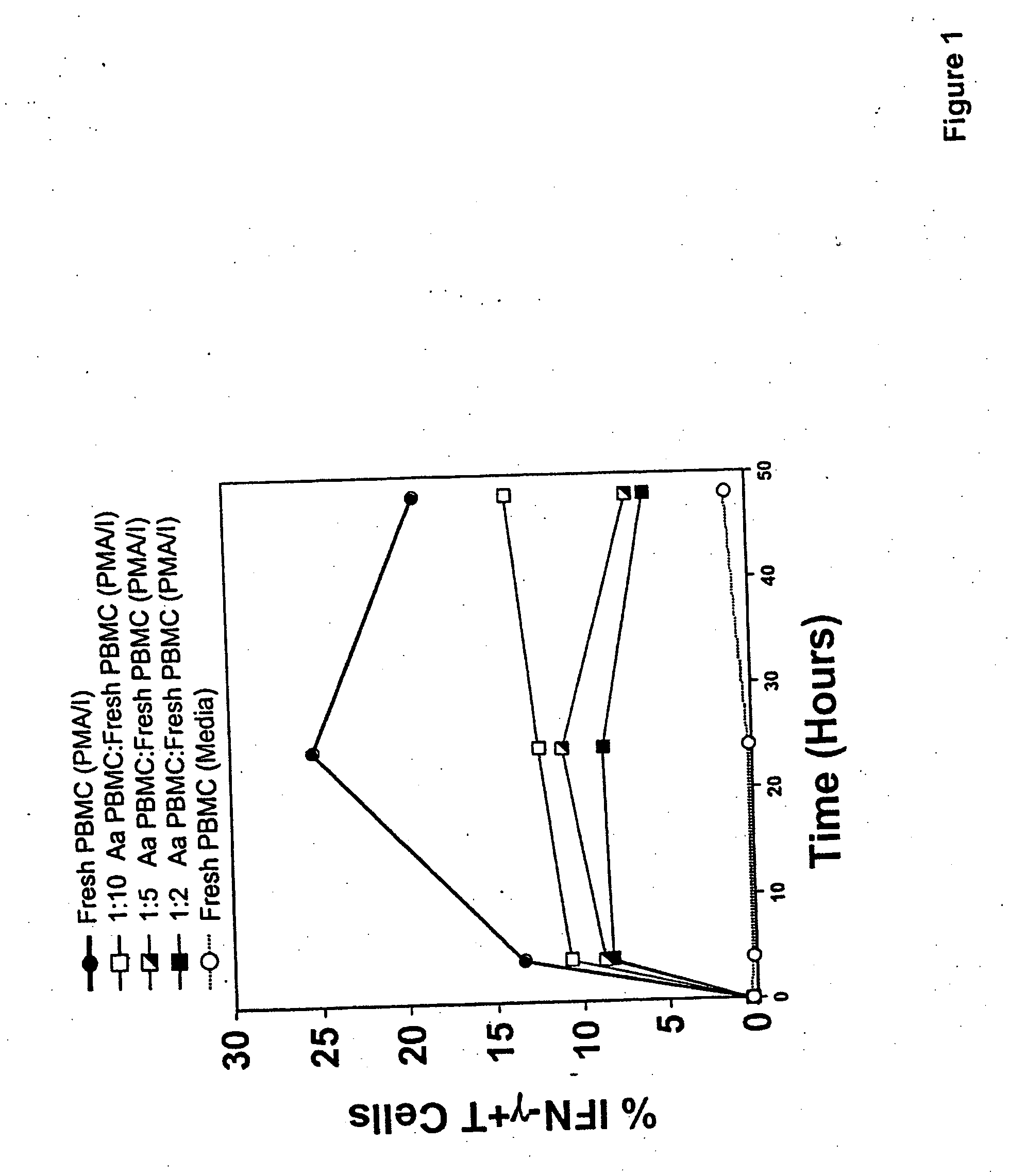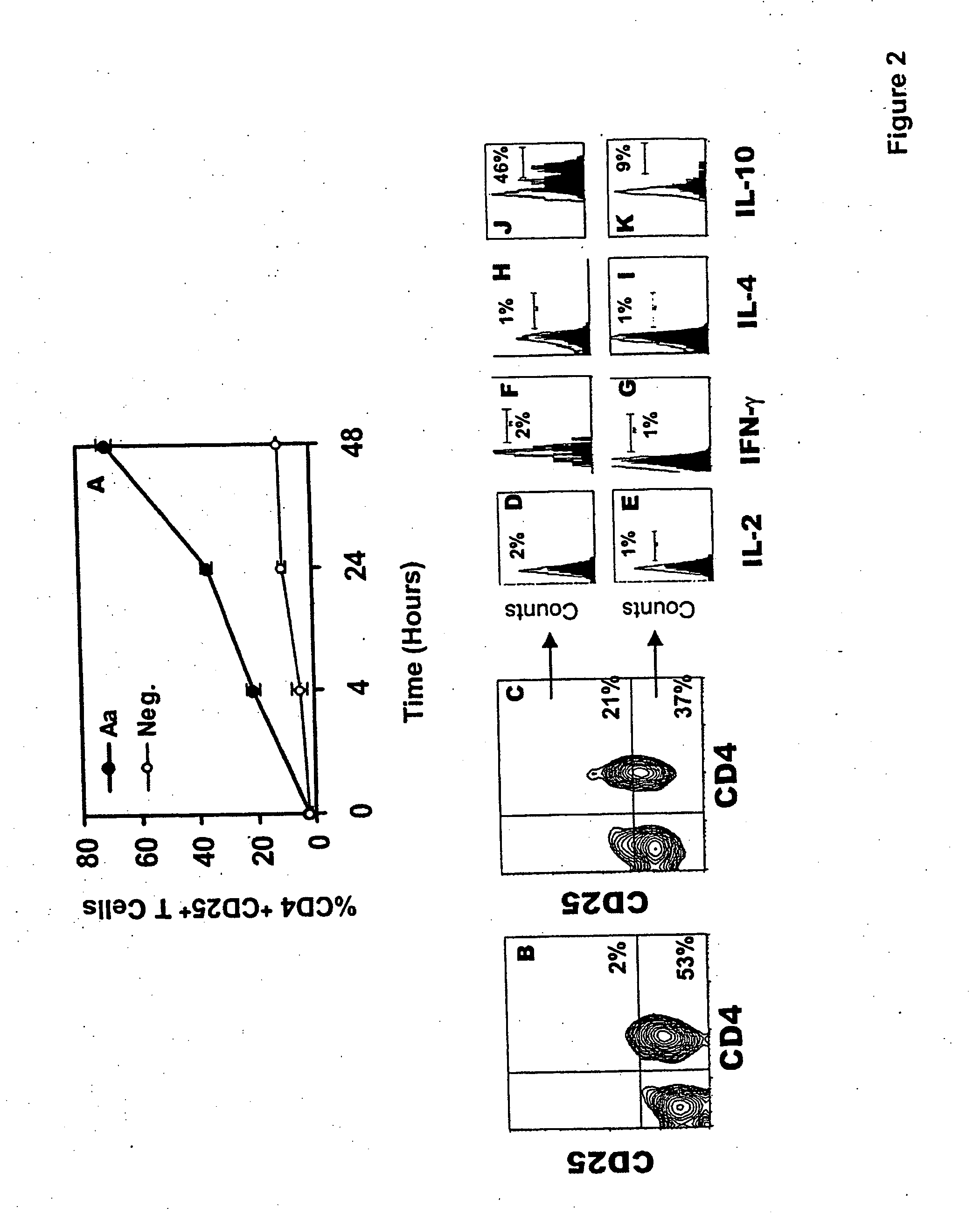Generation of human regulatory T cells by bacterial toxins for the treatment of inflammatory disorders
a technology of inflammatory disorders and toxins, which is applied in the field of immunotherapy, can solve the problems of autoimmune disease development, insufficient clinical application level, etc., and achieve the effects of suppressing the immune system, and promoting the proliferation of regulatory t cells
- Summary
- Abstract
- Description
- Claims
- Application Information
AI Technical Summary
Problems solved by technology
Method used
Image
Examples
examples
[0105] The examples herein are meant to exemplify the various aspects of carrying out the invention and are not intended to limit the invention in any way.
Materials and Methods
[0106] Subjects. 25 systemically and periodontally healthy subjects participated in this study. Subjects included 15 males and 10 females with a mean age of 35 years. Subjects were requested to sign an informed consent that was previously approved by the Institutional Review Board at the University of Southern California. Cultural analysis was used to select subjects for this study that did not harbor A. actinomycetemcomitans in their dental plaque. This entailed sampling of the dental plaque from 3 periodontal sulcus sites for each patient using paper points. The plaque samples were then inoculated on TSBV selective media and cultivable colonies were examined for the presence of A. actinomycetemcomitans (Slots, J., J. Clin. Microbiol., 15:606 (1982)). The rationale for selecting A. actinomycetemcomitans cul...
PUM
| Property | Measurement | Unit |
|---|---|---|
| Molecular Weight | aaaaa | aaaaa |
| time period | aaaaa | aaaaa |
| time period | aaaaa | aaaaa |
Abstract
Description
Claims
Application Information
 Login to View More
Login to View More - R&D
- Intellectual Property
- Life Sciences
- Materials
- Tech Scout
- Unparalleled Data Quality
- Higher Quality Content
- 60% Fewer Hallucinations
Browse by: Latest US Patents, China's latest patents, Technical Efficacy Thesaurus, Application Domain, Technology Topic, Popular Technical Reports.
© 2025 PatSnap. All rights reserved.Legal|Privacy policy|Modern Slavery Act Transparency Statement|Sitemap|About US| Contact US: help@patsnap.com



